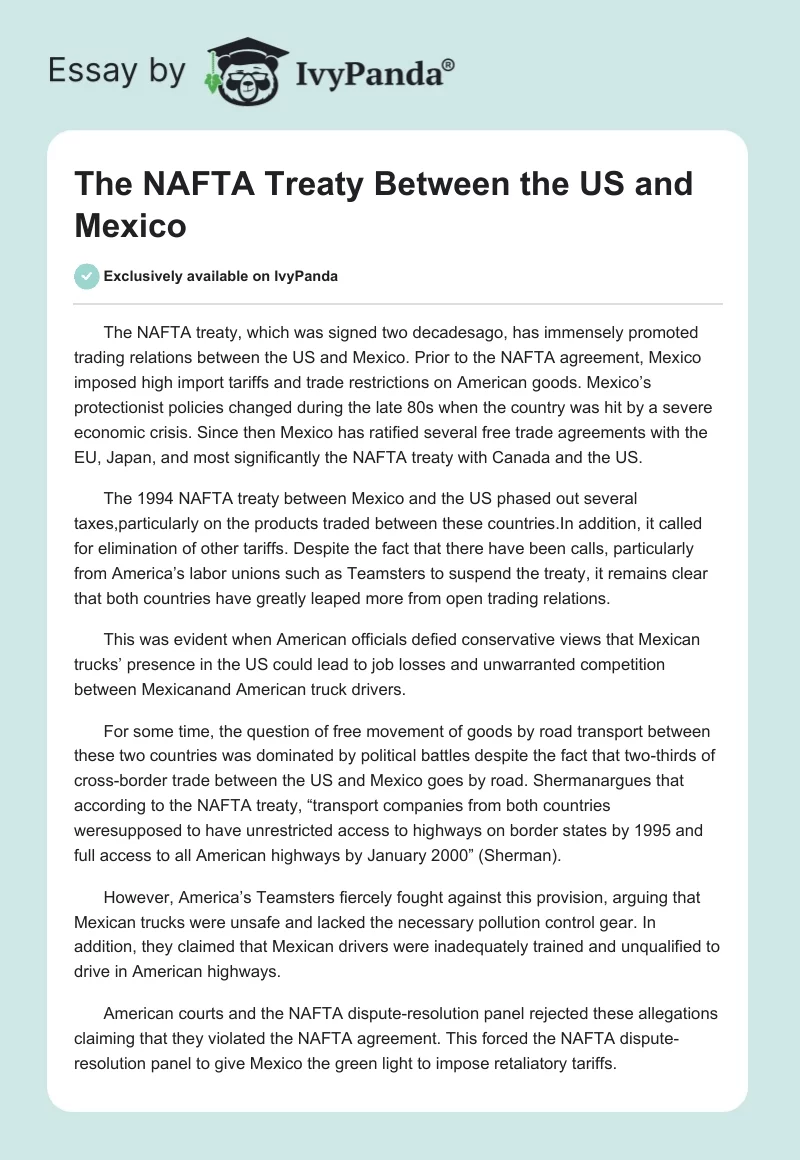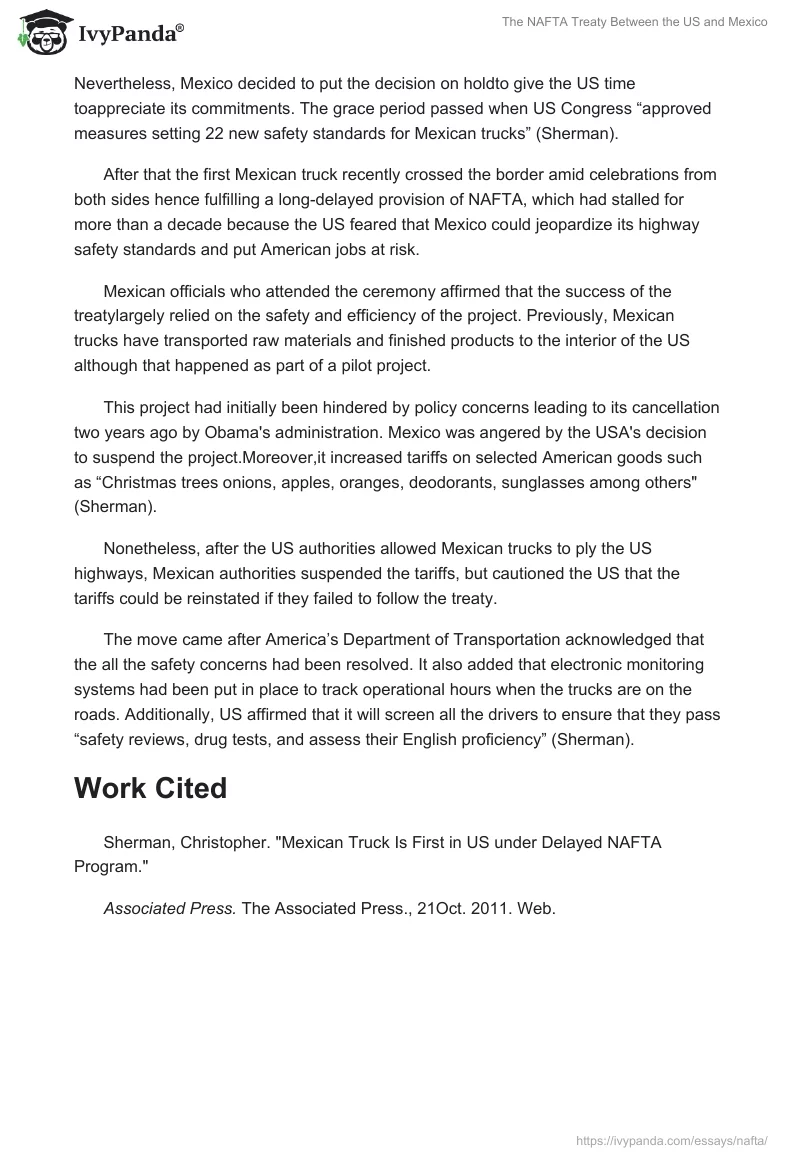The NAFTA treaty, which was signed two decadesago, has immensely promoted trading relations between the US and Mexico. Prior to the NAFTA agreement, Mexico imposed high import tariffs and trade restrictions on American goods. Mexico’s protectionist policies changed during the late 80s when the country was hit by a severe economic crisis. Since then Mexico has ratified several free trade agreements with the EU, Japan, and most significantly the NAFTA treaty with Canada and the US.
The 1994 NAFTA treaty between Mexico and the US phased out several taxes,particularly on the products traded between these countries.In addition, it called for elimination of other tariffs. Despite the fact that there have been calls, particularly from America’s labor unions such as Teamsters to suspend the treaty, it remains clear that both countries have greatly leaped more from open trading relations.
This was evident when American officials defied conservative views that Mexican trucks’ presence in the US could lead to job losses and unwarranted competition between Mexicanand American truck drivers.
For some time, the question of free movement of goods by road transport between these two countries was dominated by political battles despite the fact that two-thirds of cross-border trade between the US and Mexico goes by road. Shermanargues that according to the NAFTA treaty, “transport companies from both countries weresupposed to have unrestricted access to highways on border states by 1995 and full access to all American highways by January 2000” (Sherman).
However, America’s Teamsters fiercely fought against this provision, arguing that Mexican trucks were unsafe and lacked the necessary pollution control gear. In addition, they claimed that Mexican drivers were inadequately trained and unqualified to drive in American highways.
American courts and the NAFTA dispute-resolution panel rejected these allegations claiming that they violated the NAFTA agreement. This forced the NAFTA dispute-resolution panel to give Mexico the green light to impose retaliatory tariffs. Nevertheless, Mexico decided to put the decision on holdto give the US time toappreciate its commitments. The grace period passed when US Congress “approved measures setting 22 new safety standards for Mexican trucks” (Sherman).
After that the first Mexican truck recently crossed the border amid celebrations from both sides hence fulfilling a long-delayed provision of NAFTA, which had stalled for more than a decade because the US feared that Mexico could jeopardize its highway safety standards and put American jobs at risk.
Mexican officials who attended the ceremony affirmed that the success of the treatylargely relied on the safety and efficiency of the project. Previously, Mexican trucks have transported raw materials and finished products to the interior of the US although that happened as part of a pilot project.
This project had initially been hindered by policy concerns leading to its cancellation two years ago by Obama’s administration. Mexico was angered by the USA’s decision to suspend the project.Moreover,it increased tariffs on selected American goods such as “Christmas trees onions, apples, oranges, deodorants, sunglasses among others” (Sherman).
Nonetheless, after the US authorities allowed Mexican trucks to ply the US highways, Mexican authorities suspended the tariffs, but cautioned the US that the tariffs could be reinstated if they failed to follow the treaty.
The move came after America’s Department of Transportation acknowledged that the all the safety concerns had been resolved. It also added that electronic monitoring systems had been put in place to track operational hours when the trucks are on the roads. Additionally, US affirmed that it will screen all the drivers to ensure that they pass “safety reviews, drug tests, and assess their English proficiency” (Sherman).
Work Cited
Sherman, Christopher. “Mexican Truck Is First in US under Delayed NAFTA Program.”
Associated Press. The Associated Press., 21Oct. 2011. Web.


